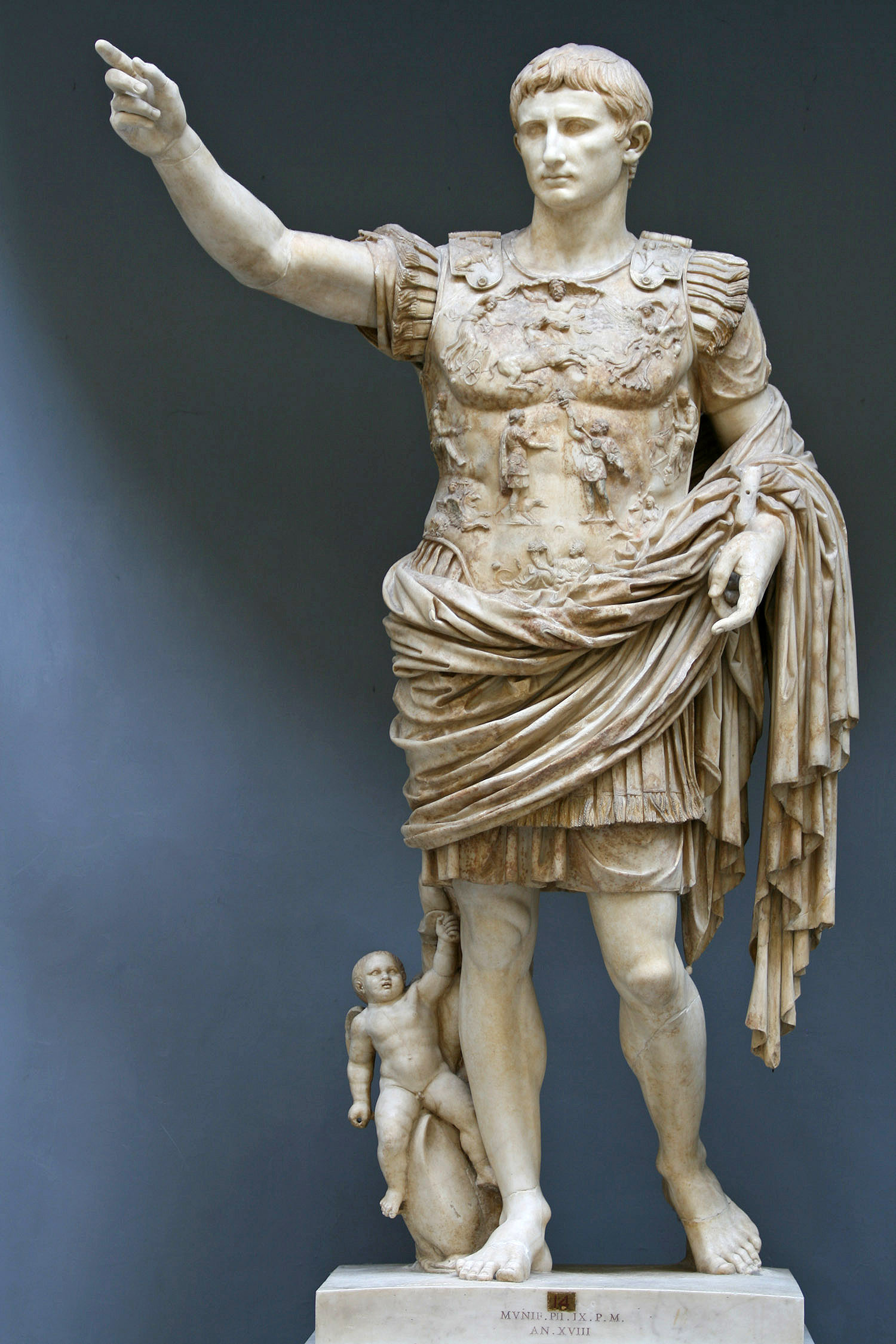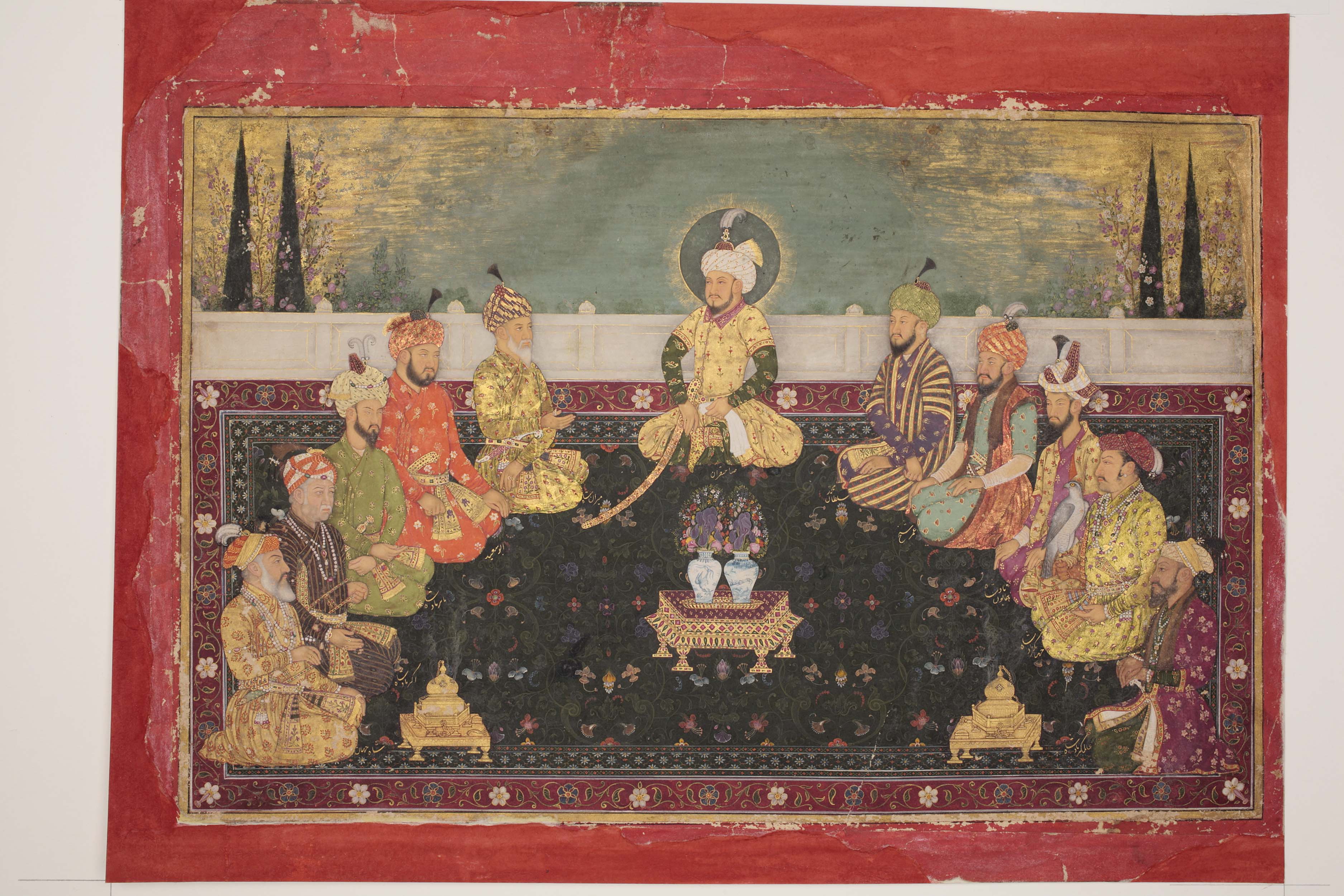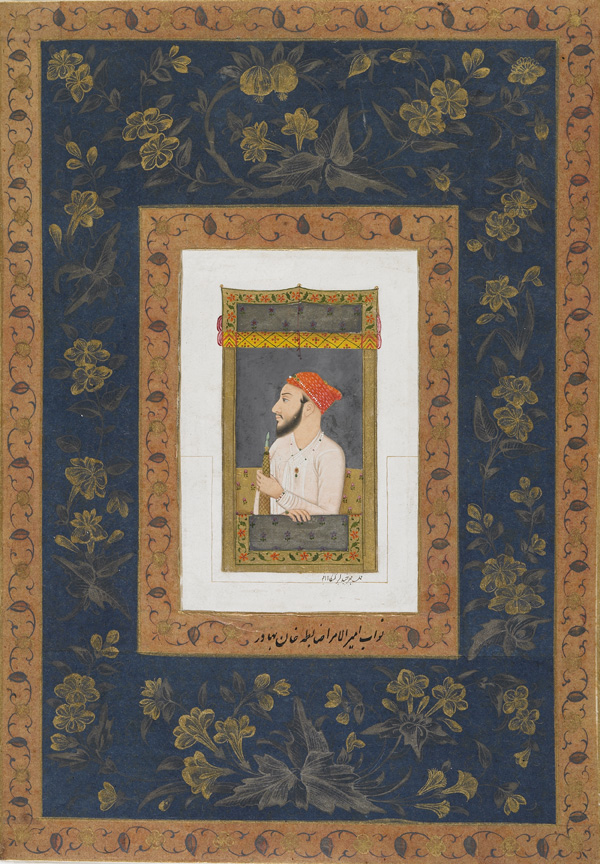|
Shah Jahan IV
Bidar Bakht Mahmud Shah Bahadur, also known by his regnal name Jahan Shah, was the eighteenth Mughal emperor for a brief period in 1788 after Shah Alam II was deposed by Ghulam Kadir, Mahmud Shah Bahadur was the son of a former Mughal Emperor, Ahmad Shah Bahadur. He himself became emperor for a brief period in 1788 as a puppet of Ghulam Kadir, after Shah Alam II had been deposed and blinded. He was allegedly put to death in 1790 by order of Shah Alam II, supposedly for usurping his authority in 1788. Early life Born as Prince Bidar Bakht, he was the eldest surviving child of Emperor Ahmad Shah. Sometime afterwards, he was granted the title of ''Mahmud Shah Bahadur'' and was also known as ''Banka'', a term used then in Mughal India referring distinguished warriors or champions. He was given the governorship of Punjab in 1753 on the death of the erstwhile governor Mir Mannu, though he remained in court. Upon his fathers's deposition, he was imprisoned in the Salimgarh Palace-pri ... [...More Info...] [...Related Items...] OR: [Wikipedia] [Google] [Baidu] |
Padishah
Padishah ( fa, پادشاه; ; from Persian: Old_Persian.html" ;"title="r Old Persian">r Old Persian: * 'master', and ''shāh'', 'king'), sometimes Romanization of Persian, romanised as padeshah or padshah ( fa, پادشاه; ota, پادشاه, pādişah; tr, padişah, ; ur, , hi, बादशाह, baadashaah), is a superlative sovereign title of Persian origin. A form of the word is known already from Middle Persian, or Pahlavi language, as ''pātaxšā(h)'' or ''pādixšā(y)''. Middle Persian ''pād'' may stem from Avestan ''paiti'', and is akin to Pati (title). ''Xšāy'', "to rule", and ''xšāyaθiya,'' "king", are from Old Persian. It was adopted by several monarchs claiming the highest rank, roughly equivalent to the ancient Persian notion of " Great King", and later adopted by post-Achaemenid and the Mughal emperors of India. However, in some periods it was used more generally for autonomous Muslim rulers, as in the '' Hudud al-'Alam'' of the 10th century, ... [...More Info...] [...Related Items...] OR: [Wikipedia] [Google] [Baidu] |
Regnal Name
A regnal name, or regnant name or reign name, is the name used by monarchs and popes during their reigns and, subsequently, historically. Since ancient times, some monarchs have chosen to use a different name from their original name when they accede to the monarchy. The regnal name is usually followed by a regnal number, written as a Roman numeral, to differentiate that monarch from others who have used the same name while ruling the same realm. In some cases, the monarch has more than one regnal name, but the regnal number is based on only one of those names, for example Charles X Gustav of Sweden. If a monarch reigns in more than one realm, they may carry different ordinals in each one, as some realms may have had different numbers of rulers of the same regnal name. For example, the same person was both King James VI of Scotland and King James I of England. The ordinal is not normally used for the first ruler of the name, but is used in historical references once the name ... [...More Info...] [...Related Items...] OR: [Wikipedia] [Google] [Baidu] |
1790 Deaths
Year 179 ( CLXXIX) was a common year starting on Thursday (link will display the full calendar) of the Julian calendar. At the time, it was known as the Year of the Consulship of Aurelius and Veru (or, less frequently, year 932 ''Ab urbe condita''). The denomination 179 for this year has been used since the early medieval period, when the Anno Domini calendar era became the prevalent method in Europe for naming years. Events By place Roman empire * The Roman fort Castra Regina ("fortress by the Regen river") is built at Regensburg, on the right bank of the Danube in Germany. * Roman legionaries of Legio II ''Adiutrix'' engrave on the rock of the Trenčín Castle (Slovakia) the name of the town ''Laugaritio'', marking the northernmost point of Roman presence in that part of Europe. * Marcus Aurelius drives the Marcomanni over the Danube and reinforces the border. To repopulate and rebuild a devastated Pannonia, Rome allows the first German colonists to enter territory ... [...More Info...] [...Related Items...] OR: [Wikipedia] [Google] [Baidu] |
Emperors Of The Mughal Empire
An emperor (from la, imperator, via fro, empereor) is a monarch, and usually the sovereign ruler of an empire or another type of imperial realm. Empress, the female equivalent, may indicate an emperor's wife ( empress consort), mother (empress dowager), or a woman who rules in her own right and name ( empress regnant). Emperors are generally recognized to be of the highest monarchic honor and rank, surpassing kings. In Europe, the title of Emperor has been used since the Middle Ages, considered in those times equal or almost equal in dignity to that of Pope due to the latter's position as visible head of the Church and spiritual leader of the Catholic part of Western Europe. The Emperor of Japan is the only currently reigning monarch whose title is translated into English as "Emperor". Both emperors and kings are monarchs or sovereigns, but both emperor and empress are considered the higher monarchical titles. In as much as there is a strict definition of emperor ... [...More Info...] [...Related Items...] OR: [Wikipedia] [Google] [Baidu] |
House Of Babur
The Mughal dynasty ( fa, ; ''Dudmân-e Mughal'') comprised the members of the imperial House of Babur ( fa, ; ''Khāndān-e-Āl-e-Bābur''), also known as the Gurkanis ( fa, ; ''Gūrkāniyān''), who ruled the Mughal Empire from to 1857. The Mughals originated as a Central Asian branch of the Timurid dynasty, supplemented with extra Borjigin (the clan which ruled the Mongol Empire and its successor states) bloodlines. The dynasty's founder, Babur (born 1483), was a direct descendant of the Asian conqueror Timur (1336–1405) on his father's side and of Mongol emperor Genghis Khan (died 1227) on his mother's side, and Babur's ancestors had other affiliations with Genghisids through marriage and common ancestry. The term "Mughal" is itself a derivative form of "Mongol" in the Arabic and Persian languages: it emphasised the Mongol origins of the Mughal dynasty. During much of the Empire's history, the emperor functioned as the absolute head of state, head of government and he ... [...More Info...] [...Related Items...] OR: [Wikipedia] [Google] [Baidu] |
Mahadji Shinde
Mahadaji Shinde (b. 23 December 1730 – 12 February 1794), later known as Mahadji Scindia or Madhava Rao Sindhia, was a Maratha statesman and ruler of Ujjain in Central India. He was the fifth and the youngest son of Ranoji Rao Scindia, the founder of the Scindia dynasty. The Maratha Resurrection in North India Mahadaji was instrumental in resurrecting Maratha power in North India after the Third Battle of Panipat in 1761, and rose to become a trusted lieutenant of the Peshwa, leader of the Maratha Empire. Along with Madhavrao I and Nana Fadnavis, he was one of the three pillars of Maratha Resurrection. During his reign, Gwalior became the leading state in the Maratha Empire and one of the foremost military powers in India. After accompanying Shah Alam II to Delhi in 1771, he restored the Mughals in Delhi and became the Naib Vakil-i-Mutlaq'' (Deputy Regent of the Empire). Mahadji Shinde's principal advisors were all Shenvis. He annihilated the power of Jats of Mathura ... [...More Info...] [...Related Items...] OR: [Wikipedia] [Google] [Baidu] |
Badshah Begum
Badshah Begum ( 1703 – 14 December 1789) was Empress consort of the Mughal Empire from 8 December 1721 to 6 April 1748 as the first wife and chief consort of the Mughal emperor Muhammad Shah. She is popularly known by her title Malika-uz-Zamani ("Queen of the Age") which was conferred upon her by her husband, immediately after their marriage. Badshah Begum was a second-cousin of her husband and was a Mughal princess by birth. She was the daughter of Mughal emperor Farrukhsiyar and his first wife, Gauhar-un-Nissa Begum. She wielded major political influence in the Mughal court during her husband's reign and was his most influential wife. It was through her efforts that her step-son, Ahmad Shah Bahadur, was able to ascend the Mughal throne. Family and lineage Badshah Begum was born c.1703, during the reign of her great-great-grandfather Aurangzeb. She was the daughter of the later Mughal emperor Farrukhsiyar and his first wife, Gauhar-un-Nissa Begum. Farrukhsiyar was the se ... [...More Info...] [...Related Items...] OR: [Wikipedia] [Google] [Baidu] |
Rohilla
Rohillas are a community of Pashtun ancestry, historically found in Rohilkhand, a region in the state of Uttar Pradesh, India. It forms the largest Pashtun diaspora community in India, and has given its name to the Rohilkhand region. The Rohilla military chiefs settled in this region of northern India in the 1720s, the first of whom was Daud Khan. The Rohillas are found all over Uttar Pradesh, but are more concentrated in the Rohilkhand regions of Bareilly and Moradabad divisions. Between 1838 and 1916, some Rohillas migrated to Guyana, Suriname and Trinidad and Tobago in the Caribbean region of the Americas in which they form a subset of the Muslim minority of the Indo-Caribbean ethnic group. After the 1947 Partition of India, many of the Rohillas migrated to Karachi, Pakistan as a part of the Muhajir community. Origin The term ''Rohilla'' first became common in the 17th century. ''Rohilla'' was used to refer to the people coming from the land of ''Roh''. ''Ro ... [...More Info...] [...Related Items...] OR: [Wikipedia] [Google] [Baidu] |
Mir Mannu
Mian-Moin-ul-Mulk also known by his title Mir Mannu (died 1753) was the Mughal and later Durrani governor of the Punjab between 1748 and 1753. Early life Moin-ul-Mulk was the son of Qamar-ud-Din Khan, Grand Vizier of the Mughal Empire, and younger brother of Intizam-ud-Daulah.He was belonged to an Arain tribe. Subedar of Lahore In March 1748, Moin-ul-Mulk successfully commanded troops in the defeat of Ahmad Shah Durrani at the Battle of Manupur. During the campaign, his father was struck and killed by a cannonball whilst encamped and praying. In battle he held the Mughal vanguard until reinforcements arrived from Safdar Jung, subsequently making a bold dash of cavalry which resulted in the routing of Durrani's forces.Siddiqi, Zameeruddin. “THE WIZARAT OF SAFDAR JANG.” Proceedings of the Indian History Congress, vol. 29, 1967, pp. 190–204. JSTOR, www.jstor.org/stable/44155496. Accessed 3 Aug. 2020. After Durrani's retreat to Afghanistan, Moin-ul-Mulk was made governor ... [...More Info...] [...Related Items...] OR: [Wikipedia] [Google] [Baidu] |
University Of Rajasthan
University of Rajasthan is a public and state university in Jaipur, Rajasthan, India and is one of the oldest universities in the state. It was set up on 8 January 1947 as the University of Rajputana and was given its current name in 1956. Campus Spread in approximately on Jawaharlal Nehru Marg, also known as the central spine of Jaipur, the central campus incubates various departments, libraries, sports complexes etc. The university has always accorded a high priority to games and sports. The university has a modern sports complex, and also a swimming pool, the latter has been the venue of many national swimming meets and inter university-national tournaments. Organisation and administration Affiliated colleges Its jurisdiction extends over the two districts Dausa and Jaipur. , University of Rajasthan has published a list of 255 Affiliated Colleges. Constituent colleges * University Commerce College * University Maharani College Maharani College is a girls co ... [...More Info...] [...Related Items...] OR: [Wikipedia] [Google] [Baidu] |
Sterling Publishers
Sterling Publishing Company, Inc. is a publisher of a broad range of subject areas, with multiple imprints and more than 5,000 titles in print. Founded in 1949 by David A. Boehm, Sterling also publishes books for a number of brands, including AARP, Hasbro, Hearst Magazines, and ''USA TODAY'', as well as serves as the North American distributor for domestic and international publishers including: Anova, the Brooklyn Botanic Garden, Carlton Books, Duncan Baird, Guild of Master Craftsmen, the Orion Publishing Group, and Sixth & Spring Books. Sterling also owns and operates two verticals, Lark Crafts and Pixiq. Sterling Publishing is a wholly owned subsidiary of Barnes & Noble, which acquired it in 2003. On January 5, 2012, ''The Wall Street Journal'' reported that Barnes & Noble had put its Sterling Publishing business up for sale. Negotiations failed to produce a buyer, however, and Sterling is reportedly no longer for sale as of March, 2012. In January 2022, Sterling rebranded a ... [...More Info...] [...Related Items...] OR: [Wikipedia] [Google] [Baidu] |
Ghulam Kadir
Ghulam Kadir, fully Ghulam Abd al Qadir Ahmed Khan ( ur, غلام عبد القادر احمد خان, unknown – 3March 1789), was a leader of the Afghan Rohilla during the late 18th century in the time of the Mughal Empire. He is particularly known for blinding the Mughal Emperor Shah Alam II and occupying and plundering Delhi for two and a half months in 1788. Biography Early life Ghulam Kadir was the son of Zabita Khan. His father had assumed the leadership of a branch of the Afghan Rohilla after the death of his own father Najib-ud-Daula on 31October 1770. As the eldest son of Najib-ud-Daula, Zabita Khan had succeeded him and was invested as ''Mir Bakhshi'' (Head of the Mughal Army) by Shah Alam II on 29December 1770. Imprisonment in Qudsiya Bagh After several rebellions by the Rohillas led by Zabita Khan, Shah Alam II began a military campaign against him, led by the Maratha leader Mahadaji Shinde. During this campaign Ghulam Kadir, aged eight to ten, was captured ... [...More Info...] [...Related Items...] OR: [Wikipedia] [Google] [Baidu] |




